How big is the fast charging market?
Foreword
People always ask, how big is the fast charging market?
Today we will talk about this topic.
As early as 2015, OPPO first proposed the Slogan of “charging for 5 minutes and talking for 2 hours” on a smartphone, which has become a familiar classic advertising slogan.
In the same year, Apple released the new MacBook, the first notebook computer that supports USB PD fast charging, which is also the first time that fast charging has entered the notebook market.
In the following years, with the joint promotion of OPPO, Huawei, Xiaomi, vivo, Meizu and many other manufacturers, fast charging has rapidly entered the fast lane of development in the consumer power supply market, and the market capacity has grown rapidly.
The popularity of fast charging benefits from the unification of USB-C connectors and the use of common interfaces, thus reducing the number of proprietary interfaces and special adapters, and reducing the generation of electronic waste when the equipment is eliminated, saving energy and environmental protection.
The fast charging market is not only what we have seen, but there are more applications that we need to explore and expand, and popularize fast charging to facilitate our life.
Global volume
The earliest market for fast charging technology to find a breakthrough is mobile phones, and the convenience brought by fast charging has been deeply rooted in the hearts of the people . Starting from mobile phones, it has gradually covered seven major markets including tablet computers, notebook computers, monitors, new energy vehicles, power tools, and IoT devices.

Through the analysis of the overall shipment data of these seven major markets, it can be seen that smartphones account for the largest proportion, followed by IoT devices. The total number of these two terminals exceeds 2 billion units each year. It can be seen that in the era of the Internet of Everything, everything needs to be charged. .

The market that fast charging will cover, such as power tools and monitors, is also very large, with a total of more than 500 million units, especially the power tool market, which should not be underestimated in the future.
The number of new energy vehicles shipped here is only one million units, and it has not yet reached the tens of millions of units. It is still in the early stage of development, and it will become the main application scenario of fast charging in the future. After all, the three-point and one-line life of home, car and office, and the car is the hub.
It cannot be ignored that this is only the statistical data for 2020, and does not include the past data before that, so the stock market will continue to exert its residual heat.
Smart phone
According to the latest data released by the authoritative market research agency IDC, the global smartphone shipments will reach 1.29 billion in 2020. The top three brands in terms of shipments were Samsung, Apple and Huawei, with shipments of 266.7 million, 206.1 million and 189 million units, respectively. Xiaomi and OPPO also achieved shipments of 147.8 million and 111.2 million units respectively.
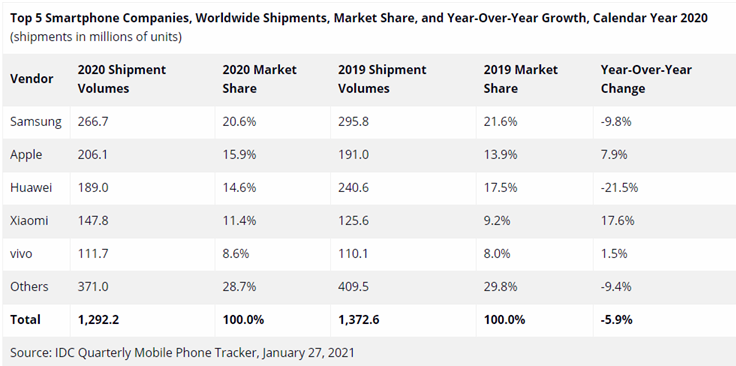
It is understood that since the launch of the iPhone 8 series in 2017, Apple has released 14 iPhone models that support fast charging. Among them, the iPhone 12 series launched in 2020 is the groundbreaking cancellation of the standard charger ; this model alone has added hundreds of millions of USB PD fast charging devices to the market, and made billions of PD fast charging devices. The market for charging accessories is released.
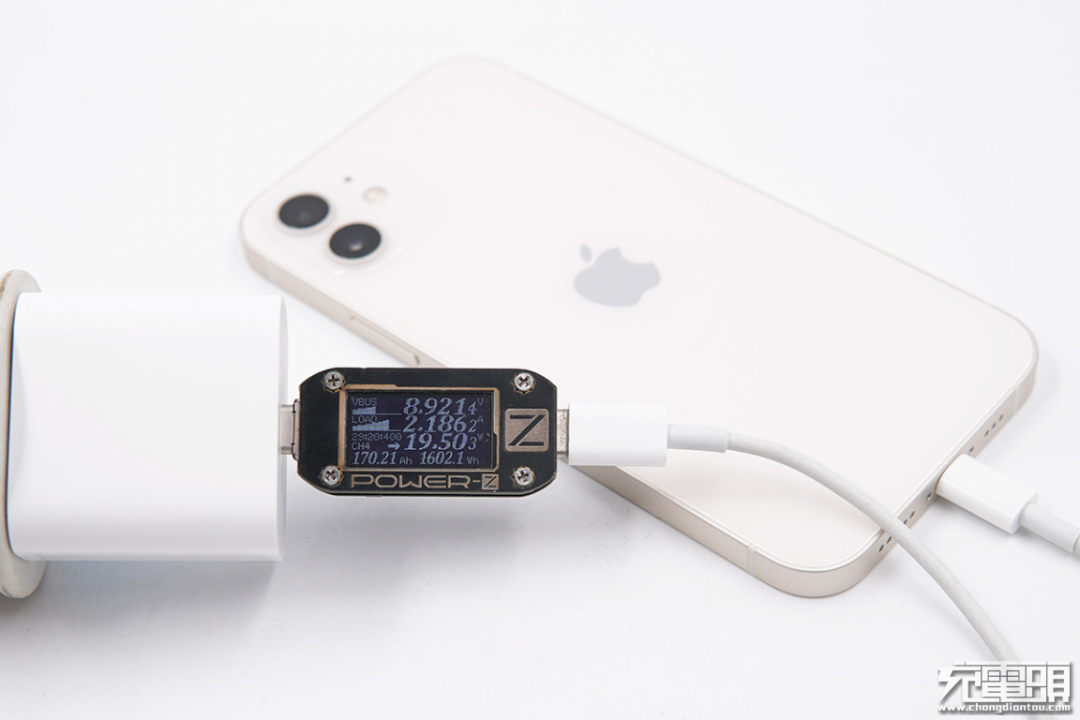
In the Android mobile phone camp, Huawei, Xiaomi, Samsung, OPPO, vivo, OnePlus, Meizu, Nubia and other mobile phone brands have become the second most common mobile phone brands outside the private agreement of each mobile phone brand while promoting high-power fast charging. Fast charging standard, and released a variety of PD fast charging chargers, mobile power supplies and other accessories based on the USB-C interface to improve the versatility of fast charging and accelerate the popularization of USB PD & Type-C.
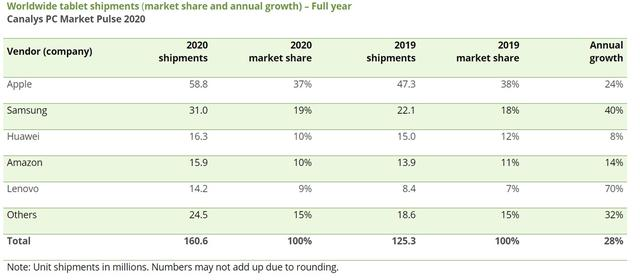
Tablet
Data from Canalys shows that tablet shipments for the whole of 2020 have reached about 160 million units, of which Apple’s tablet shipments are estimated at 58.8 million units, an increase of 24% over 2019. Samsung shipped an estimated 31 million units, followed by Huawei and Amazon with 16.3 million and 15.9 million, respectively.
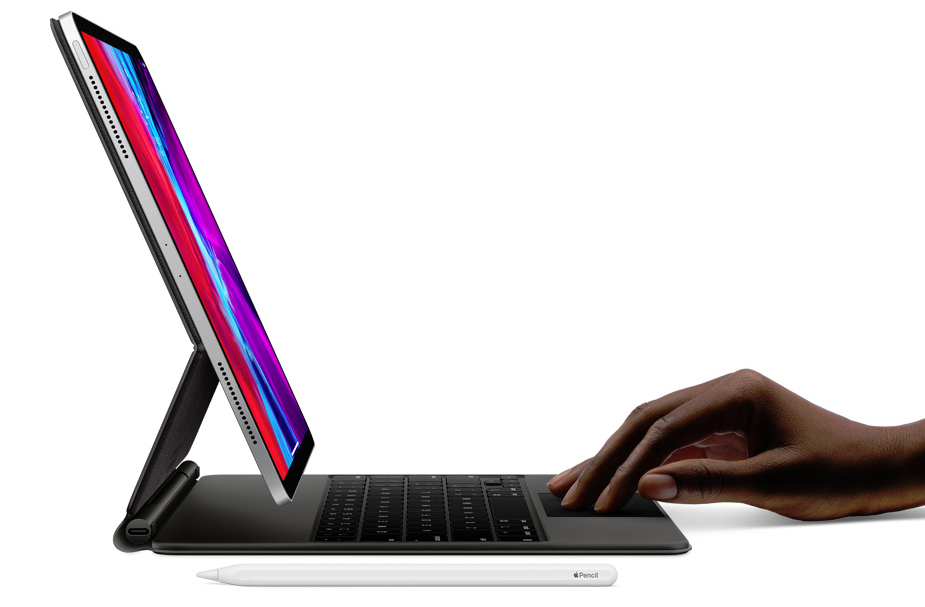
In terms of the iPad product line, Apple has launched 8 iPads that support USB PD fast charging, three of which are standard 5V non-fast charging chargers with charging power ranging from 10-12W, and four are standard 18W fast charging charger, a standard 20W fast charging charger.
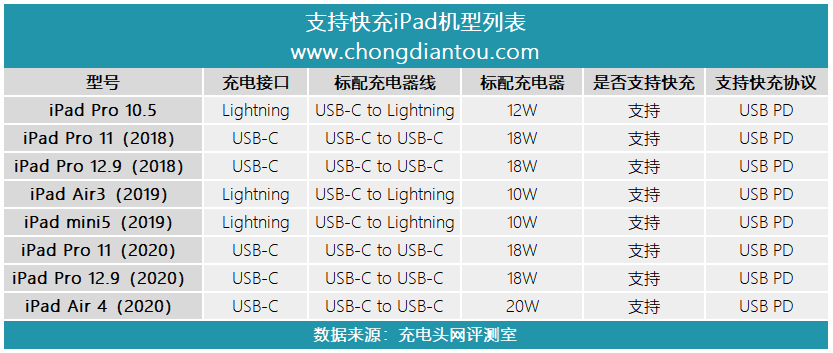
According to the actual measurement of the charging head network, the fast charging power of Apple’s iPads that support PD fast charging is generally between 25W-30W. In other words, it is necessary to use a PD fast charging charger with a power greater than 30W to make the iPad achieve the fastest charging speed. The market holding of the iPad is also invisibly stimulating the market demand for higher-power fast charging accessories.
Laptop
According to Canalys statistics, global computer sales in 2020 will reach 297 million units, of which notebook computer shipments will reach 235.1 million units and desktop computers will be about 6,190 units.
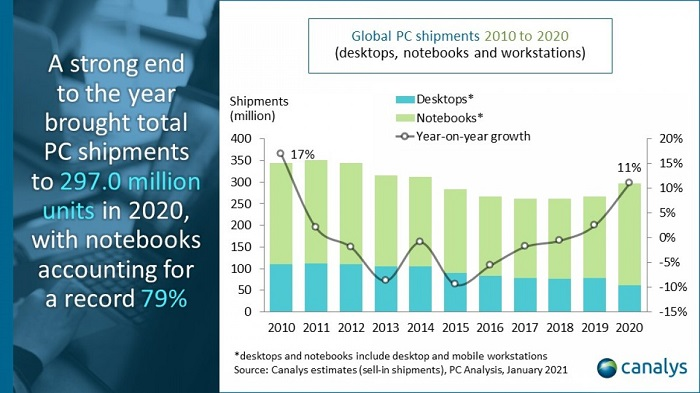
The data shows that among many computer manufacturers, Lenovo occupies nearly a quarter of the market with sales of 72.7 million units, while HP and Dell also occupy the second and third positions with sales of 67.6 million units and 50.3 million units respectively. .
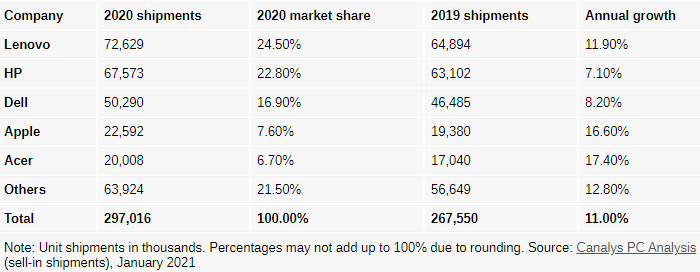
Among the top five manufacturers of notebook computer shipments, there are many series of products that use USB Type-C as a standard charging/data interface, which is equivalent to at least hundreds of millions of notebook computers supporting USB PD fast charging every year. With the influx of products into the market, the market prospects of the fast charging accessories supporting them have also become very impressive.
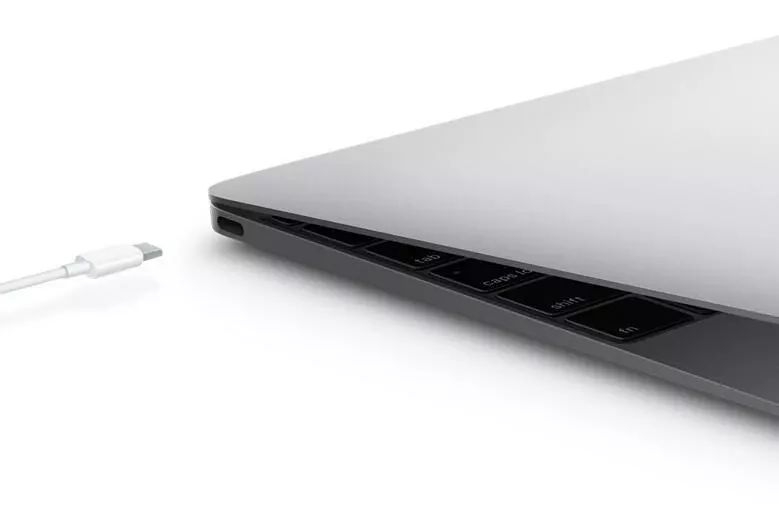
Since the notebook supports USB PD power supply, the power bank has begun to support high power output. It used to be used to charge mobile phones, but now the output power of the mobile power supply has reached 100W, reaching the upper limit of the output power of USB PD. It is naturally no problem to satisfy the charging of notebooks and tablets.
Monitor
With the popularity of USB Type-C, projectors and monitors have also added the support of the USB-C interface . The audio and video signals are transmitted through the USB Type-C cable, and the audio and video signals are output through the USB-C interface of the computer. monitor, and can also supply power to portable monitors through the USB interface.
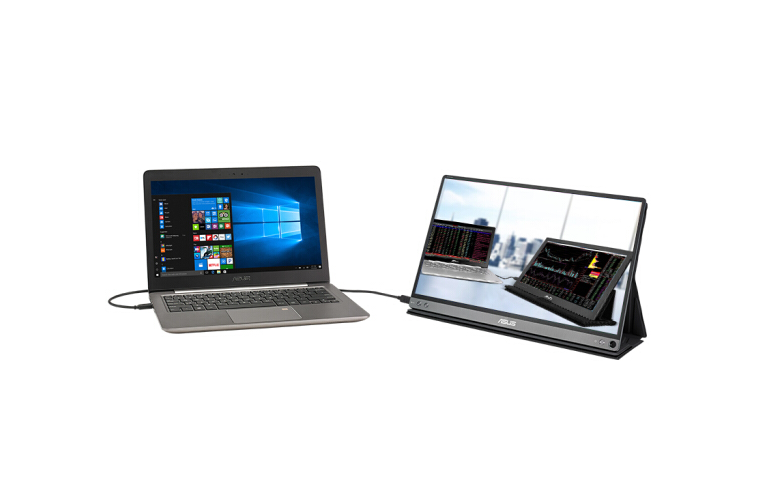
ASUS launched a portable monitor in 2016 with a size of 15 inches. It can be directly connected to the USB port of the computer to expand another screen, which greatly improves office efficiency and is easy to store and carry with you. There are also many new brands in this market .
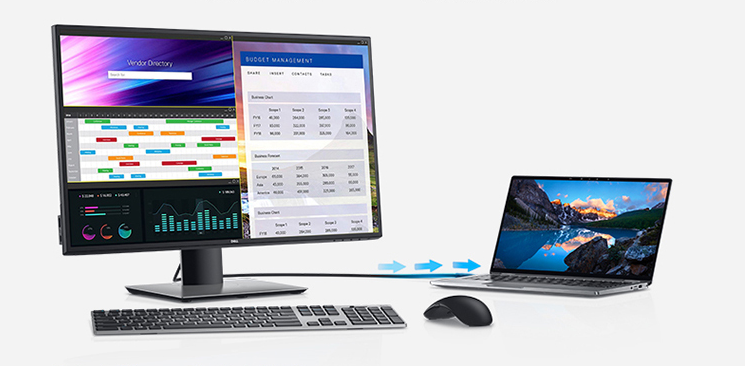
The large-size display using 220V power supply also adds USB PD power supply support inside the display, and the PD power supply part is also added to the internal power supply of the display, which can supply power to the connected notebook computer output at the same time as the video signal is transmitted. One line communication with the monitor. Simplify desktop cables and reduce the number of adapters.
With the increasing shipments of notebooks, more and more users of notebooks use external monitors to expand, and consumers are more and more aware of the convenience of powering notebooks with monitors. It is only a matter of time before PD fast charging is popularized in displays.
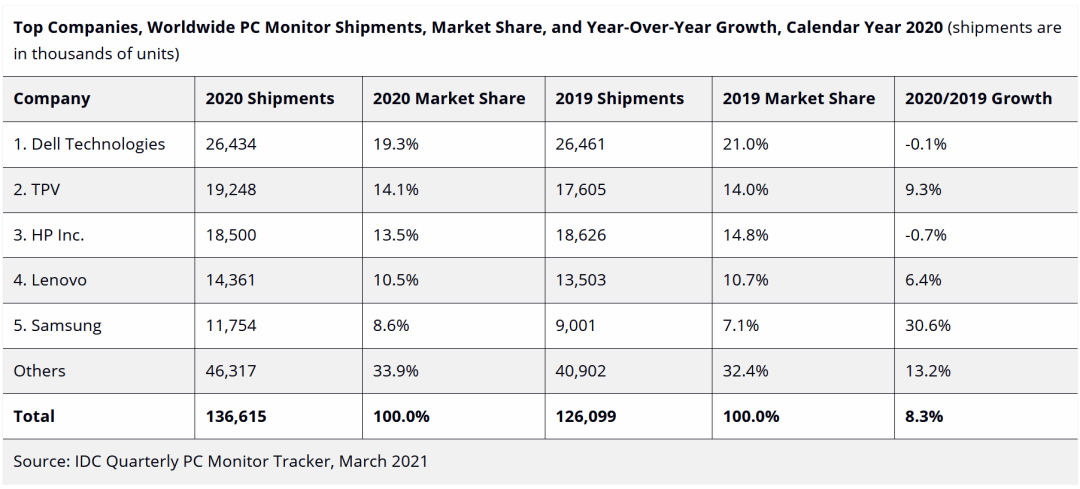
The top five PC monitor manufacturers in 2020 are Dell with 26.434 million units, with a market share of 19.3%; TPV with 19.248 million units, with a market share of 14.1%; HP with 18.5 million units, with a market share of 13.5%; Lenovo with 14.361 million units, with a market share of 10.5% and 10.5%. Samsung has 11.754 million units, with a market share of 8.6%. A total of 136 million PC monitors were shipped throughout the year.
Due to the impact of the epidemic, the number of users working from home, telecommuting, and online education has increased rapidly around the world, resulting in a more urgent demand for productivity tools from consumers. In addition to purchasing PCs, monitors can also improve work efficiency and work experience. What’s more, in some fields, such as design, creation or game entertainment, a good screen is essential.
Nnew energy vehicles
The common application fields of USB Type-C & USB PD fast charging are mainly smartphones, notebook computers and portable electronic devices. However, in the past two years, the advantages of USB Type-C & USB PD have been gradually explored. At present, they have been supported by many top automotive electronics manufacturers and have begun to be applied in automotive pre-installation systems.
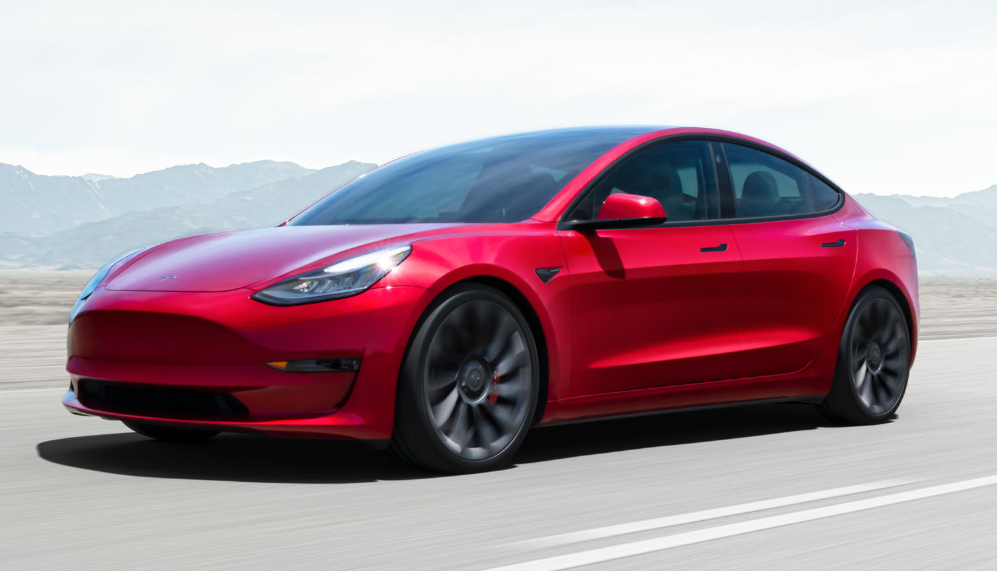
According to data from the Swedish EV-volumes company, the global sales of new energy vehicles in 2020 will be 3.24 million, compared with 2.26 million in the same period last year, a year-on-year increase of 43.36%. In 2020, the European car market fell by 20% year-on-year, but nearly 1.4 million new energy vehicles were registered, a 137% increase from 2019.
It is worth mentioning that the top sales of new energy vehicles in 2020 came from Tesla Model 3, with a total of more than 360,000 vehicles sold throughout the year. According to the standard configuration of 3 USB-C fast charging ports in each car, this model will use more than 1 million sets of fast charging sources and protocol chips every year.
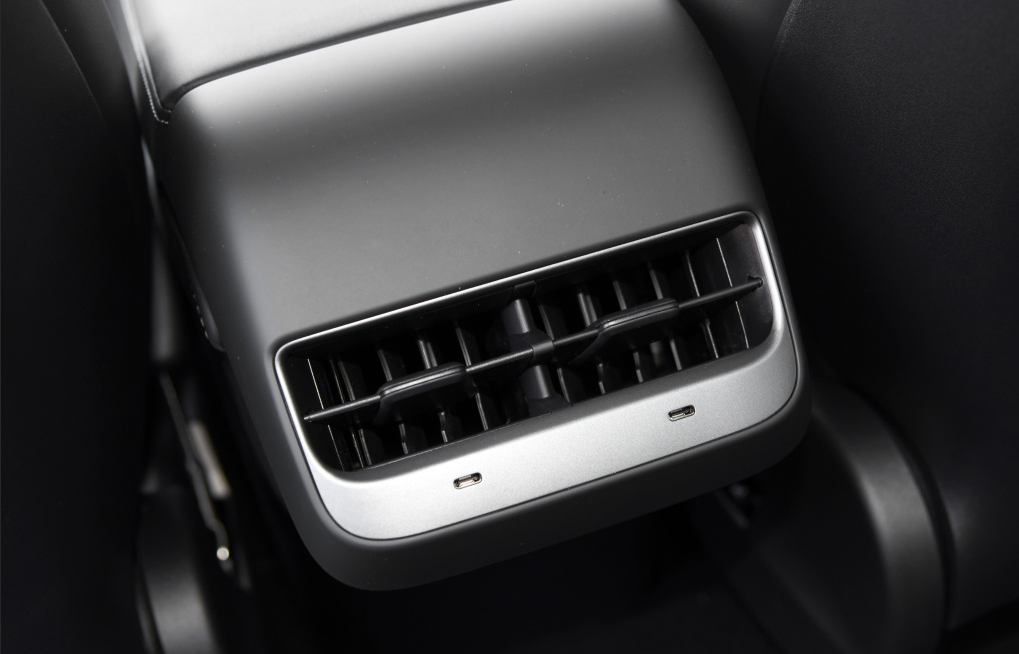
It is understood that Tesla has adopted USB Type-C as a standard charging and data transmission interface in the 2020 Model 3. As a benchmark brand in the field of new energy vehicles, Tesla’s approach is bound to set off a wave of USB Type-C popularity in the industry. The new energy vehicle market is also expected to become a new area for the development of USB Type-C & PD fast charging.
Eelectrical tools
In recent years, with the development trend of miniaturization and convenience of power tools, the penetration rate of cordless rechargeable power tools has become higher and higher, and its proportion has increased from 30% in 2011 to about 64% in 2020. The advantages of energy density and long cycle life are more and more widely used in power tools. In 2020, lithium-ion tools will account for up to 90% of cordless power tools.
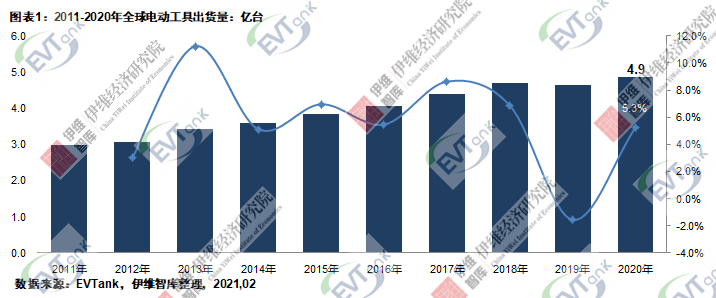
Research institutions EVTank, Ivey Economic Research Institute and China Battery Industry Research Institute jointly released the 2020 power tool shipment data. Statistics show that in 2020, the global power tool shipments will reach 490 million units, a year-on-year increase of 5.3%.
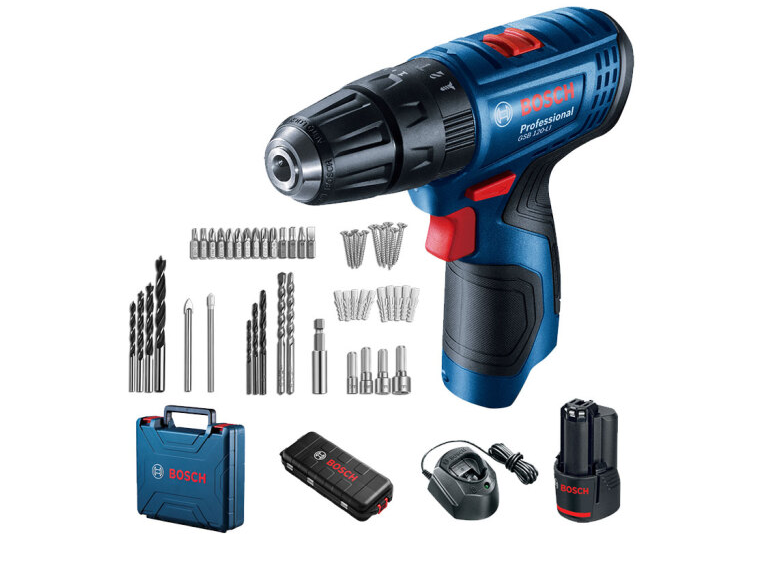
It has to be said that the penetration rate of fast charging in the power tool market is still quite low, and only some newly launched products are equipped with a USB-C interface. Through market research, the charging head network found that the power tool market has a strong demand for fast charging technology. The built-in power cells of power tools have high performance and high discharge capacity, and are naturally suitable for fast charging.
However, due to cost and inertia, power tools generally use linear charging. Except for a small number of high-end products that come with a 1-hour fast charging stand, it takes 3 hours to charge popular products. The market is still in the incubation period, and the future development potential is huge.
For the 1- and 3-series power tools with the highest market penetration, a very mature fast charging solution can now be used to replace the built-in linear charging and external chargers. While increasing the charging speed, a universal USB PD adapter can also be used, eliminating the need for an external charger.
USB-IF has also paid attention to the application of USB-C interface and USB PD fast charging technology in the power tool market. In the future, it is not ruled out that the output voltage of USB PD will be upgraded to 24-48V to be compatible with multi-string high-power battery packs in the power tool market. fast charging needs.
IoT devices
Market analyst firm IDC predicts that smart home device shipments will reach 854 million units in 2020, a year-on-year growth of 4.1%. In the longer term, IDC expects global shipments to exceed 1.4 billion units in 2024, with a five-year CAGR of 14%. IDC said this growth will come from people spending more and continuing to invest in home automation equipment and services.
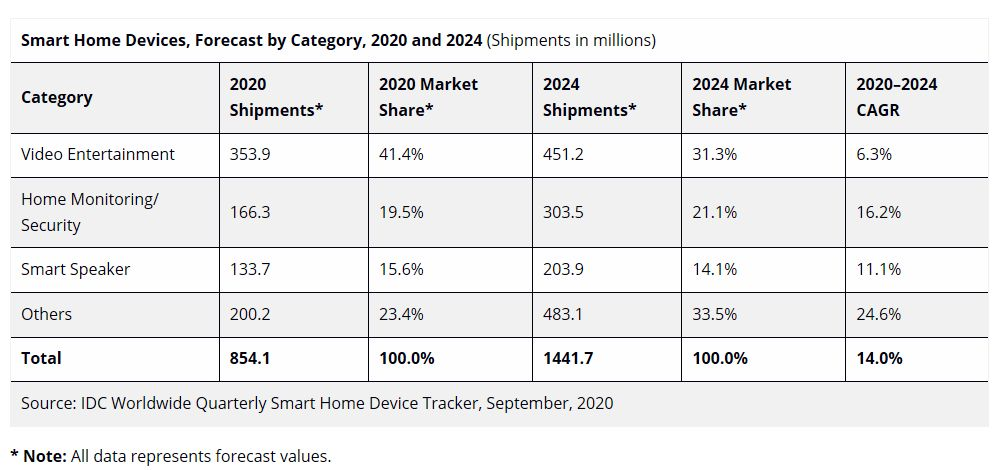
The coverage of smart home equipment is very extensive, not just pointing to a device or electrical appliance, but a general term for many smart appliances. It covers smart TVs, smart routers, smart speakers, smart door locks, lighting equipment that are common in daily life, and also includes personal care products, such as shavers, electric toothbrushes, beauty devices, facial cleansers, and even small devices on your desktop. fan.
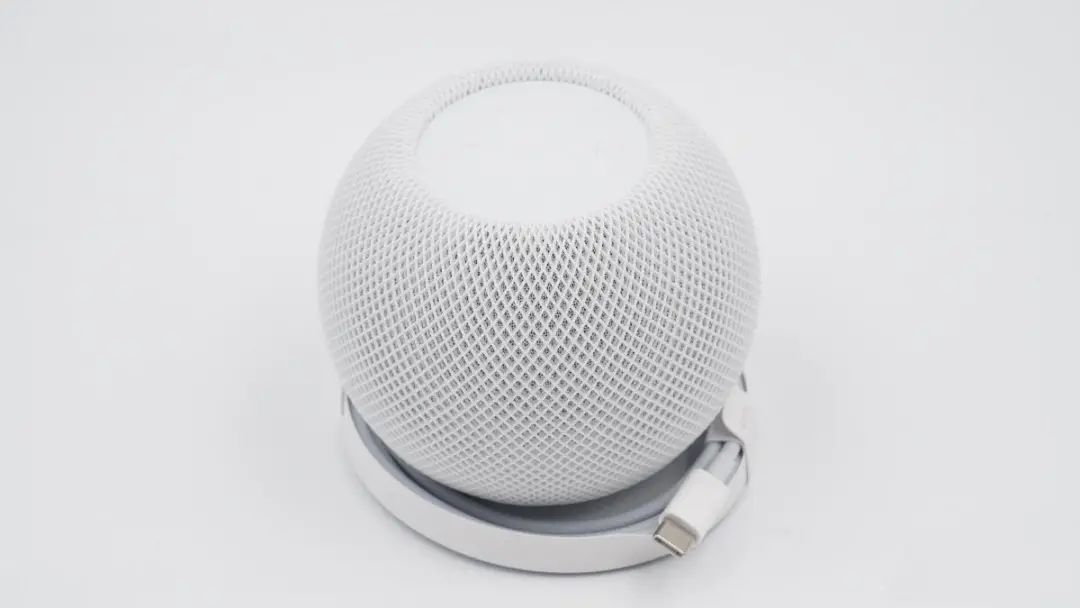
And don’t forget, there are also wearables. There are too many to list here. In short, the popularity of fast charging for smart home devices is also the general trend.
Summary of charging head network
Well, through the data analysis on the charging head network, the reader must have a preliminary understanding of the market volume of fast charging.
Yes, if you don’t research, you don’t know; when you research, you will be shocked.
First, let’s take a look at the most popular market for mobile phones.
The annual shipment of billions of mobile phones has provoked a huge single market, and this market has contributed to the popularity of fast charging. Remember OPPO’s advertising slogan, charging for five minutes, talking for two hours. This has long been deeply rooted in the hearts of the people. It can be seen that the anxiety of mobile phone battery life is a pain point that almost everyone will face.
Charging a mobile phone is an eternal need. Since the era of BB phones, it has experienced big brothers, feature phones, smart phones, etc., from AAA disposable dry batteries to recyclable polymer batteries, from 1W slow charging to 120W fast charging . For more than 20 years, we have witnessed the rapid development of charging technology and the substantial increase in charging power, which is doomed to be inseparable between the mobile terminal market and fast charging.
Secondly, there is the tablet and notebook computer market.
Laptops, which are the heroes of the popularization of high-power fast charging, have brought practical needs for use. Especially the power of 65W and 90W has promoted the popularization of multi-port fast charging and high-power PD mobile power supply.
With the continued in-depth analysis of the charging head network, the annual sales of mobile phones, tablets, and notebook computers reached 1.685 billion units. The demand for charging chips is 3.37 billion. For semiconductor companies, a piece of the pie can be a piece of cake.
Third, let’s look at the new energy vehicle market.
According to market data, the sales volume of new energy vehicles in 2020 has exceeded 3.2 million, and the newly launched electric vehicles have USB-C ports as standard equipment, which is probably the largest capacity “charging treasure” on the market. Compared with fuel vehicles, which need to purchase on-board chargers to realize the fast charging function, new energy vehicles have this technology as standard, which is really convenient.
At present, many established car companies around the world have made announcements to stop research and development of fuel engines. In the near future, the annual shipment of new energy vehicles will reach the 10 million mark, and cars will also become our high-frequency usage scenarios for fast charging. And with home and office, Trinity.
Fourth, I have to say the power tool market.
Power tools with built-in lithium batteries are very popular in daily life. They provide a lot of convenience for assembling tables and chairs or disassembling electrical appliances. Many people will purchase them at home for backup. There are many power tool manufacturers in China, but the popular products use linear charging, and the charging time is long, which also affects the user experience.
If the linear charging can be upgraded to switching fast charging, or the battery pack that requires a special charger can be charged, a buck-boost charging circuit can be added, so that it can be charged with fast charging. The first benefit is that it can improve the user experience and greatly reduce the time required for battery charging. In addition, there is no need to attach a special charger, and the fast charging of the mobile phone is directly used for charging, which reduces the cost of the product and allows both manufacturers and consumers to enjoy the dividends brought by the popularity of fast charging.
Fifth, the accumulated IoT device market.
The interconnection of all things has also made many traditional home appliances a member of smart home devices. In addition, various personal devices have also entered the smart home category. It has to be said that there are many types of IoT devices, covering all aspects of our lives.
The IoT device market embraces fast charging, starting with a unified interface. The USB-C port has become the first choice for new smart home devices, and smart home devices with built-in large-capacity batteries are naturally the best application partners for fast charging.
Well, through the analysis of the above markets, there will be nearly 3.2 billion devices on the way to popularize fast charging every year in the world, and a large number of devices support fast charging, bringing convenience to consumers.
Finally, let us meet Kuaichong as scheduled in the most beautiful years.






















































